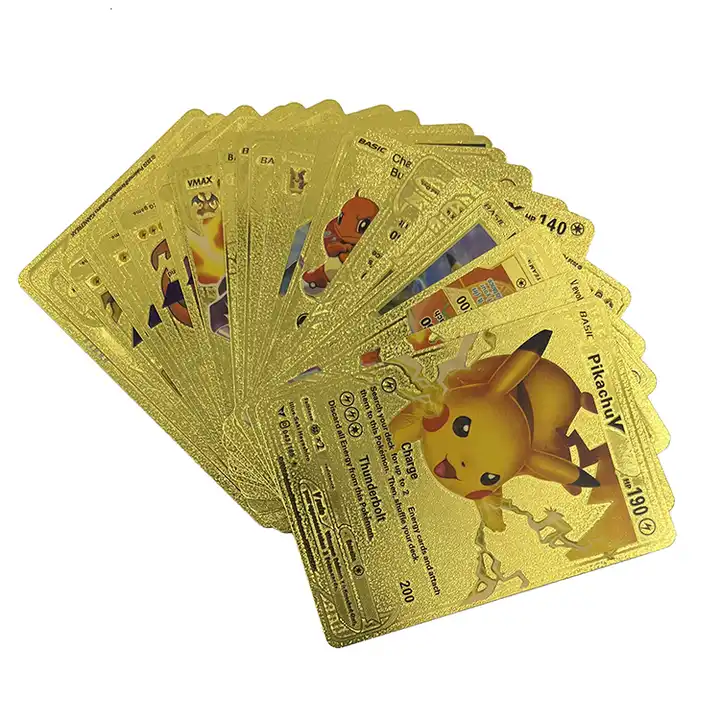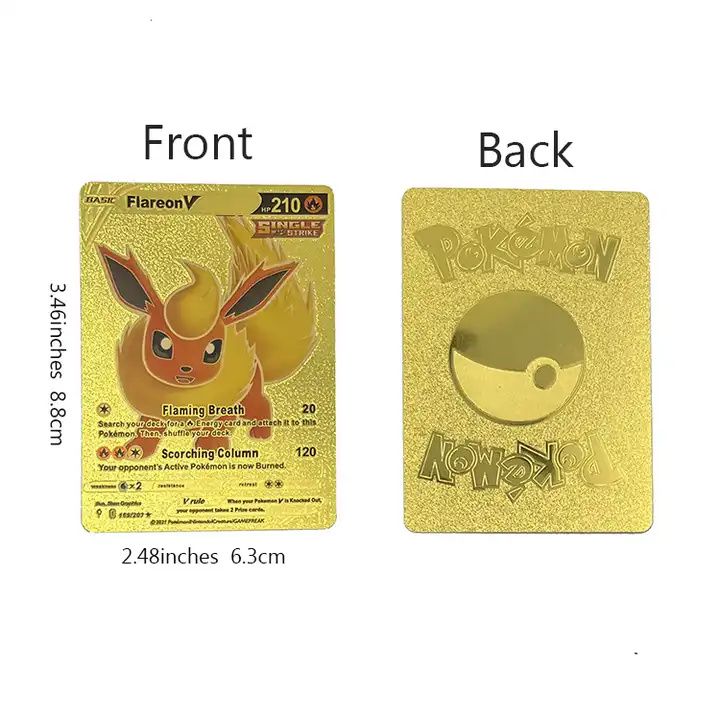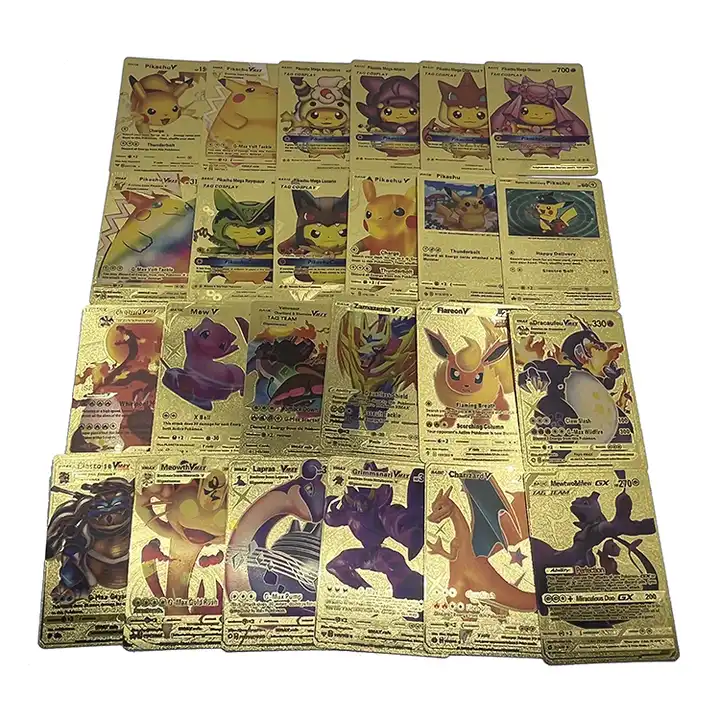Content Menu
● Introduction
● What You Need to Play
● Setting Up the Game
● Gameplay Basics
>> Winning the Game
● Advanced Strategies
>> Understanding Card Types
>> Special Conditions
>> Managing Your Resources
● The Importance of Practice
● Conclusion
● Related Questions
>> 1. What are the basic types of cards in the Pokémon TCG?
>> 2. How do you win a Pokémon TCG match?
>> 3. What is the role of Energy cards in the game?
>> 4. Can a Pokémon evolve in the same turn it is played?
>> 5. What happens if a player has no Basic Pokémon in their initial hand?
● Citations:
Introduction
The Pokémon Trading Card Game (TCG) is a captivating blend of strategy, skill, and luck that has enthralled players since its inception. Whether you are a dedicated fan of the Pokémon franchise or a newcomer to the world of trading card games, this comprehensive guide will walk you through the essentials of playing the Pokémon TCG. From understanding the types of cards to mastering gameplay mechanics, you'll be well-equipped to embark on your journey to becoming a Pokémon Master.

What You Need to Play
To get started with the Pokémon TCG, you will need:
- A Deck of Cards: Each player requires a deck consisting of exactly 60 cards. Your deck should include a combination of:
- Pokémon Cards: These represent the creatures you'll battle with.
- Energy Cards: These are used to power your Pokémon's attacks.
- Trainer Cards: These provide various effects and advantages during gameplay.
You can either purchase pre-built decks or create your own by collecting individual cards.
- Game Accessories: While not strictly necessary, having some accessories can enhance your gameplay experience:
- Damage Counters: Used to track damage on Pokémon.
- Status Condition Markers: Indicate if a Pokémon is Asleep, Burned, or Paralyzed.
- Dice: Helpful for determining damage or effects that require randomization.
- Playmat: A designated area for laying out your cards can help keep things organized.
Setting Up the Game
Setting up for a game of Pokémon TCG involves several steps:
1. Shuffle Your Deck: Thoroughly shuffle your deck to randomize the order of the cards.
2. Draw Your Hand: Each player draws seven cards from their deck to form their starting hand.
3. Place Basic Pokémon:
- Choose one Basic Pokémon from your hand to be your Active Pokémon (the one that will battle).
- You may also place up to five additional Basic Pokémon on your Bench (the support Pokémon).
4. Set Aside Prize Cards: Each player sets aside six cards from their deck face down as Prize cards. You will draw these cards when you knock out your opponent's Pokémon.
5. Determine Who Goes First: Flip a coin to decide which player will take the first turn.
Gameplay Basics
Each turn in the Pokémon TCG consists of three main phases:
1. Draw Phase: At the beginning of your turn, draw one card from your deck.
2. Action Phase: During this phase, you can perform several actions in any order:
- Play Basic Pokémon from your hand onto your Bench.
- Evolve your Pokémon by placing a Stage 1 or Stage 2 card on top of a corresponding Basic or Stage 1 Pokémon.
- Attach one Energy card from your hand to one of your Pokémon (this can be either your Active or Benched Pokémon).
- Play any number of Trainer cards (except for Supporter and Stadium cards, which are limited to one per turn).
- Retreat your Active Pokémon by paying its retreat cost in Energy and replacing it with a Benched Pokémon.
- Use any abilities that your Pokémon may have.
3. Attack Phase: Finally, use your Active Pokémon to attack your opponent's Active Pokémon. Ensure you have attached the correct amount and type of Energy required for the attack. Damage is calculated based on the attack's description, and any effects or conditions are applied accordingly.
Winning the Game
You can achieve victory in three ways:
- Collect all six Prize cards.
- Knock out all of your opponent's in-play Pokémon.
- If your opponent cannot draw a card at the beginning of their turn because their deck is empty, they lose.
Advanced Strategies
As you become more familiar with the game, consider employing advanced strategies:
- Deck Building: Create a balanced deck that includes various types of Pokémon and Trainer cards. Aim for synergy between cards for maximum effectiveness. For instance, if you have a Water-type deck, including Trainer cards that boost Water-type attacks can significantly enhance performance.
- Strategic Planning: Anticipate your opponent's moves and plan your actions accordingly. Consider how different combinations of cards can give you an edge in battle. For example, if you know an opponent's strategy relies heavily on a specific type of attack, adjusting your defense or counterattacks can turn the tide in your favor.
- Adaptability: Be prepared to change tactics based on the evolving state of play and the cards drawn during each turn. Flexibility in strategy is key; sticking rigidly to one plan can lead to defeat if circumstances change unexpectedly.
Understanding Card Types
The core mechanics of gameplay revolve around three main types of cards:
- Pokémon Cards: These are divided into Basic and Evolution forms. Basic Pokémon can be played directly onto the field, while Evolution cards must be played on top of their corresponding Basic forms after certain conditions are met (usually after at least one turn). Each Pokémon has its own unique abilities and attacks that contribute to its effectiveness in battle.
- Energy Cards: There are different types of Energy cards—Basic Energy and Special Energy. Basic Energy provides specific elemental energy (like Fire or Water), while Special Energy may provide multiple types or additional effects when attached to a Pokémon.
- Trainer Cards: These come in various forms including Item, Supporter, and Stadium cards:
- *Item Cards*: Can be played at any time during your turn and provide immediate effects such as healing or drawing extra cards.
- *Supporter Cards*: Limited to one per turn but usually have powerful effects that can significantly alter gameplay.
- *Stadium Cards*: Remain in play until another Stadium card is played and affect both players' abilities during their turns.
Special Conditions
Throughout gameplay, certain special conditions can affect how battles unfold:
- Asleep: A sleeping Pokémon cannot attack or retreat until it wakes up (determined by a coin flip at the end of its owner's turn).
- Paralyzed: A paralyzed Pokémon cannot attack or retreat during its next turn.
- Burned: A burned Pokémon takes damage at the end of each turn until it is healed or knocked out.
Understanding these conditions will help you make informed decisions during battles.
Managing Your Resources
Resource management is crucial in the Pokémon TCG:
- Energy Management: Ensure that you distribute Energy wisely among your Active and Benched Pokémon. It's often beneficial to prepare multiple attackers rather than focusing all resources on one single powerful card.
- Hand Size Control: Keep track of how many cards you have in hand versus what you need on the field. Sometimes it's better to play certain Trainer cards early even if they seem less impactful at first glance because they help maintain an optimal hand size for future turns.

The Importance of Practice
Like any game, practice is essential for improvement in the Pokémon TCG:
- Play Regularly: Engage with friends or local communities who play TCGs regularly. The more games you play, the better you'll understand different strategies and how to counter them effectively.
- Analyze Your Games: After each match, take time to reflect on what worked well and what didn't. Learning from both victories and defeats will help refine your skills over time.
- Stay Updated with Meta Changes: The competitive scene often shifts as new expansions are released and certain strategies rise or fall in popularity. Keeping abreast of these changes will allow you to adjust your decks accordingly and maintain an edge over opponents.
Conclusion
The Pokémon Trading Card Game is not only about competition but also about camaraderie and fun. By mastering its rules and mechanics, building strategic decks, and practicing regularly, players can enhance their skills and enjoy countless hours of engaging gameplay. Remember that while winning is exciting, enjoying the game and fostering connections with fellow players is equally important.

Related Questions
1. What are the basic types of cards in the Pokémon TCG?
The basic types of cards are:
- Pokémon Cards: Represent creatures used in battles.
- Energy Cards: Power attacks from Pokémon.
- Trainer Cards: Provide various strategic advantages during gameplay.
2. How do you win a Pokémon TCG match?
You win by:
- Collecting all six Prize cards,
- Knocking out all opponent's active Pokémon,
- Forcing an opponent to run out of cards in their deck.
3. What is the role of Energy cards in the game?
Energy cards are essential for powering attacks from your Pokémon. Each attack requires specific types and amounts of Energy attached to it.
4. Can a Pokémon evolve in the same turn it is played?
No, a Pokémon cannot evolve in the same turn it is played; evolution can only occur on subsequent turns.
5. What happens if a player has no Basic Pokémon in their initial hand?
If there are no Basic Pokémon in hand after drawing seven cards, that player must reveal their hand, shuffle it back into their deck, and draw another hand of seven cards until they have at least one Basic Pokémon.
Citations:
[1] https://economictimes.indiatimes.com/news/international/us/pokmon-trading-card-game-how-to-play-what-are-the-basics-of-pokemon-how-each-card-works-heres-all-you-need-to-know/articleshow/101992216.cms
[2] https://www.youtube.com/watch?v=8cbHjCWZZn0
[3] https://www.youtube.com/watch?v=-l5qbcwpxIs
[4] https://pokeflip.com/blogs/news/how-to-play-the-pokemon-tcg-in-2021-a-beginners-tutorial
[5] https://www.dicebreaker.com/categories/trading-card-game/how-to/how-to-play-pokemon-tcg
[6] https://www.youtube.com/watch?v=Syx6UJtMQRQ
[7] https://assets.pokemon.com/assets/cms2/pdf/trading-card-game/rulebook/sm7_rulebook_en.pdf
































